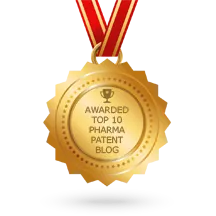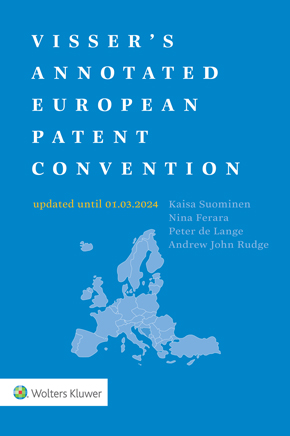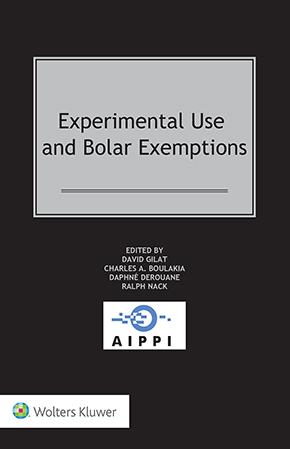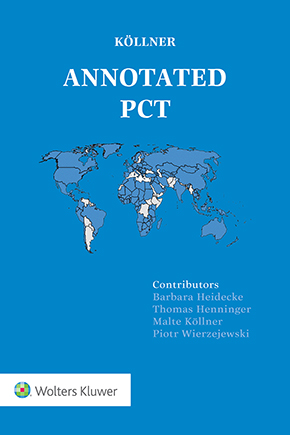T 1913/21: When Use Claims are Useless
September 23, 2025
T 1913/21 has received attention for nicely illustrating the difference between process claims and second non-medical use claims —a category of claims shaped by landmark Enlarged Board decisions G 2/88 and G 6/88 . It provides a useful illustration that simply drafting the claims in the use format isn’t enough if the use inherently relates to a process for producing a product. It also provides a nice pointer on how best to draft such claims.
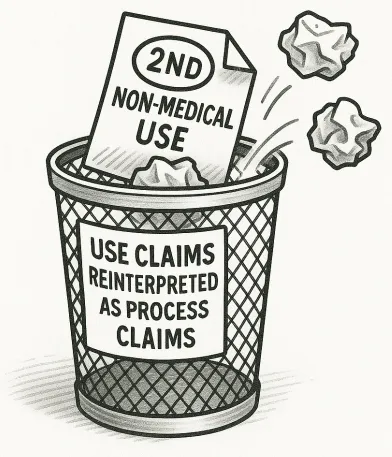
Legal Background: G 2/88 and G 6/88
G 2/88 and G 6/88 related to functional uses, such as:
· “Use of a triazole derivative… for controlling fungi and for preventive fungus control”; and
· “Use of a compound as a friction reducing additive in a lubricant composition”.
The principles established in G 2/88 and G 6/88 clarify that a non-medical use of a known substance can be novel and inventive if the technical effect of that use is included as a functional technical feature in the claim. The EBA - in G2/88 - also made clear that second non-medical use claims do not fall within the scope of Article 64(2) EPC.
In this respect the EBA clarified that:
“[P]rovided that a use claim in reality defines the use of a particular physical entity to achieve an "effect", and does not define such a use to produce a "product", the use claim is not a process claim within the meaning of Article 64(2) EPC” (r. 5.1 of G 2/88).
The Case: Claiming Pyruvate Use
In T 1913/21, the patent under appeal claimed the "use" of pyruvate to reduce trisulfide bond formation in proteins during manufacture:
Use of an inhibitor of cysteine degradation for reducing the formation of trisulfide bonds in proteins, wherein the inhibitor of cysteine degradation is selected from pyruvate…; and wherein the use comprises: culturing cells expressing said proteins in the presence of an effective amount of the inhibitor of cysteine degradation, whereby trisulfide linkage formation in said proteins is reduced relative to cells cultured in medium without the inhibitor of cysteine degradation.
The Opposition Division upheld the claims as valid second non-medical use claims over documents disclosing culturing cells expressing proteins in the presence of pyruvate, which however did not disclose that pyruvate has an influence on trisulfide formation. However, the Board of Appeal took a different view based on reinterpreting these “use” claims as “product” claims. In particular, the Board found that the claimed “use” actually comprised carrying out process steps which resulted in the production of a product. According to the Board:
“[I]n such circumstances, the claimed subject-matter must be regarded as a process for the production of proteins with a "reduced" number of trisulfide linkages, regardless of the fact that the claim is drafted as the "use" of a chemical compound” (r.20).
The different interpretation resulted in the claims being not novel as the specific “use” was no longer a functional feature limiting the claim but simply a technical effect of the process, which was inherently obtained in the prior art process comprising the same steps.
"Thus the new technical effect recited in the claim of reducing the formation of trisulfide bonds in proteins pertains to the product (the protein produced) and cannot be considered a technical limiting feature of the "use" according to G 2/88. Indeed, where an invention relates to a new technical effect of a physical entity that can only occur as part of a process for the production or manufacture of a product, such that this effect is inextricably linked to and cannot occur in isolation from the production process, a claim directed to that 'use' of the physical entity to achieve that effect must be regarded as directed to the production process per se." (r. 23)
Functional Technical Features and Claim Substance
The Board draws support from G 2/88 and G 6 /88 clarifying that for an effect to serve as a limiting functional feature as intended in these decisions, it must relate to the use of the substance itself (e.g., antifungal use of compound X), not to processes resulting in products. If the technical effect only arises as part of the production and cannot be isolated from it, then it does not qualify as a functional technical feature under G 2/88 (r.8 and 15 of T 1913/21).
The Board also emphasizes that “this strict distinction between claims directed to a use of a known compound for achieving an effect, which does not result in a product and claims directed to a process leading to the production of a product, made by the Enlarged Board in G 2/88 and G 6/88 has been implemented consistently in a number of subsequent decisions reflecting that teaching” (r. 10).
Diverging Case Law and Rejected Referral
The patentee cited contrary case law (e.g., T 62/02 and T 1011/04), which upheld similar "use" claims. However, in the Board’s view these diverging decisions did not correctly interpret G 2/88 and G 6/88, and “do not provide any reasoning as to why the claims were not regarded as claims directed to a process for the manufacture of a product, which would not allow the principles of G 2/88 to be applied, or conversely whether the competent boards were of the view that the principles of G 2/88 are transferable to process claims and why this should be so” (see r.14.1). Unsurprisingly, a request for a referral was refused (r.57).
Conclusion
The fundamental reasoning here goes back to G2/88 and G6/88, but does seem to largely depend on how exactly the claims are drafted. For example, would the claim in G 6/88 “Use of a triazole derivative… for controlling fungi and for preventive fungus control” have been found allowable if it had been drafted to include process steps, e.g.: Use of a triazole derivative… for preventing fungus, wherein the use comprises: applying the triazole derivative to a plant, whereby fungus in said plants is reduced relative to plants to which no triazole is applied”. Probably not, yet the same core invention is protected.
Similarly, it seems likely that the patentee in this case would have fared better had the claims simply related to “Use of an inhibitor of cysteine degradation for reducing the formation of trisulfide bonds in proteins, wherein the inhibitor of cysteine degradation is… pyruvate”. This provides guidance for future drafting and prosecution – rewording such claims post-grant is likely to be difficult due to Article 123(3) EPC.
Putting too many process features into second non-medical use claims risks rendering use claims useless.
You may also like






